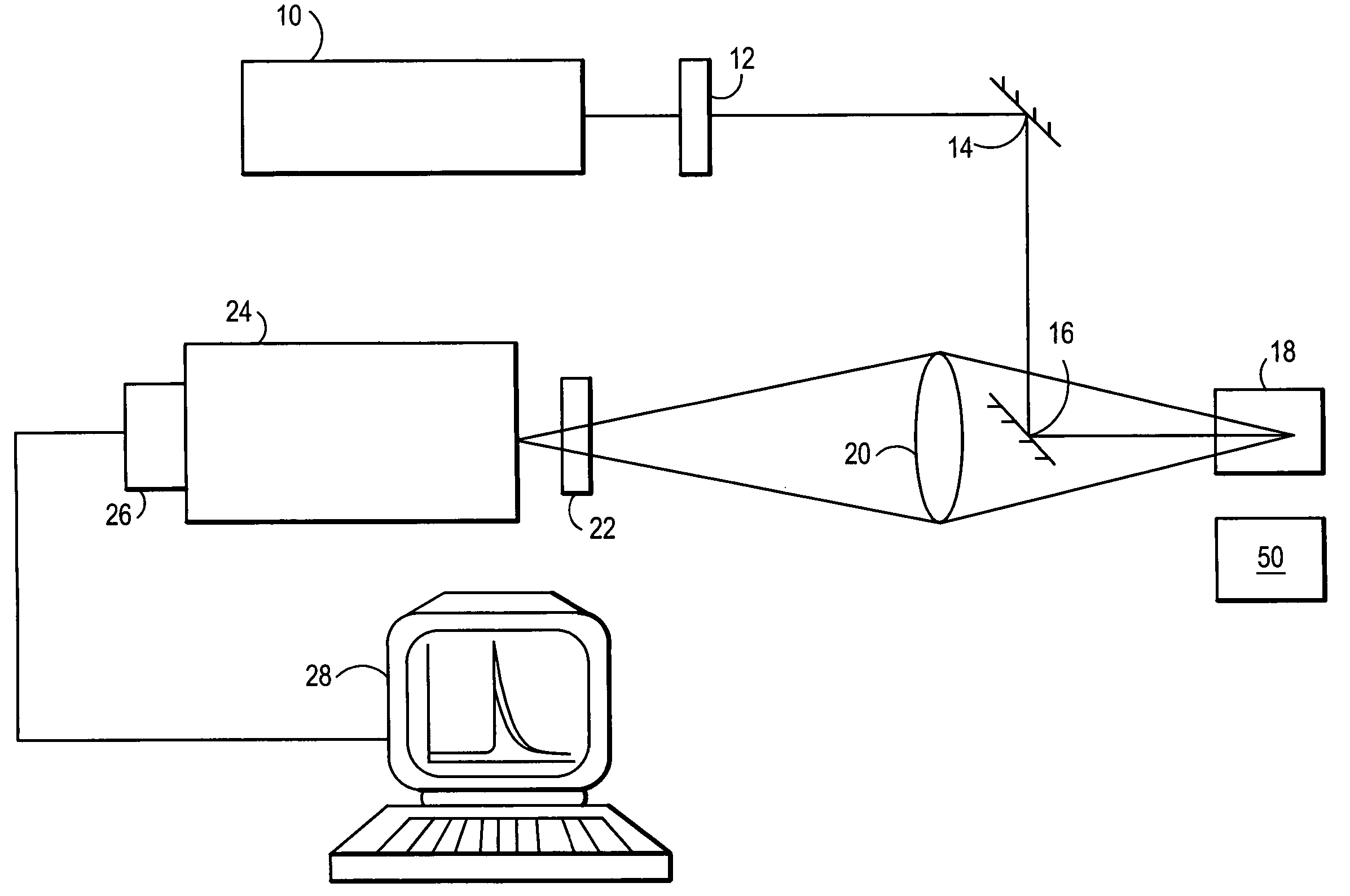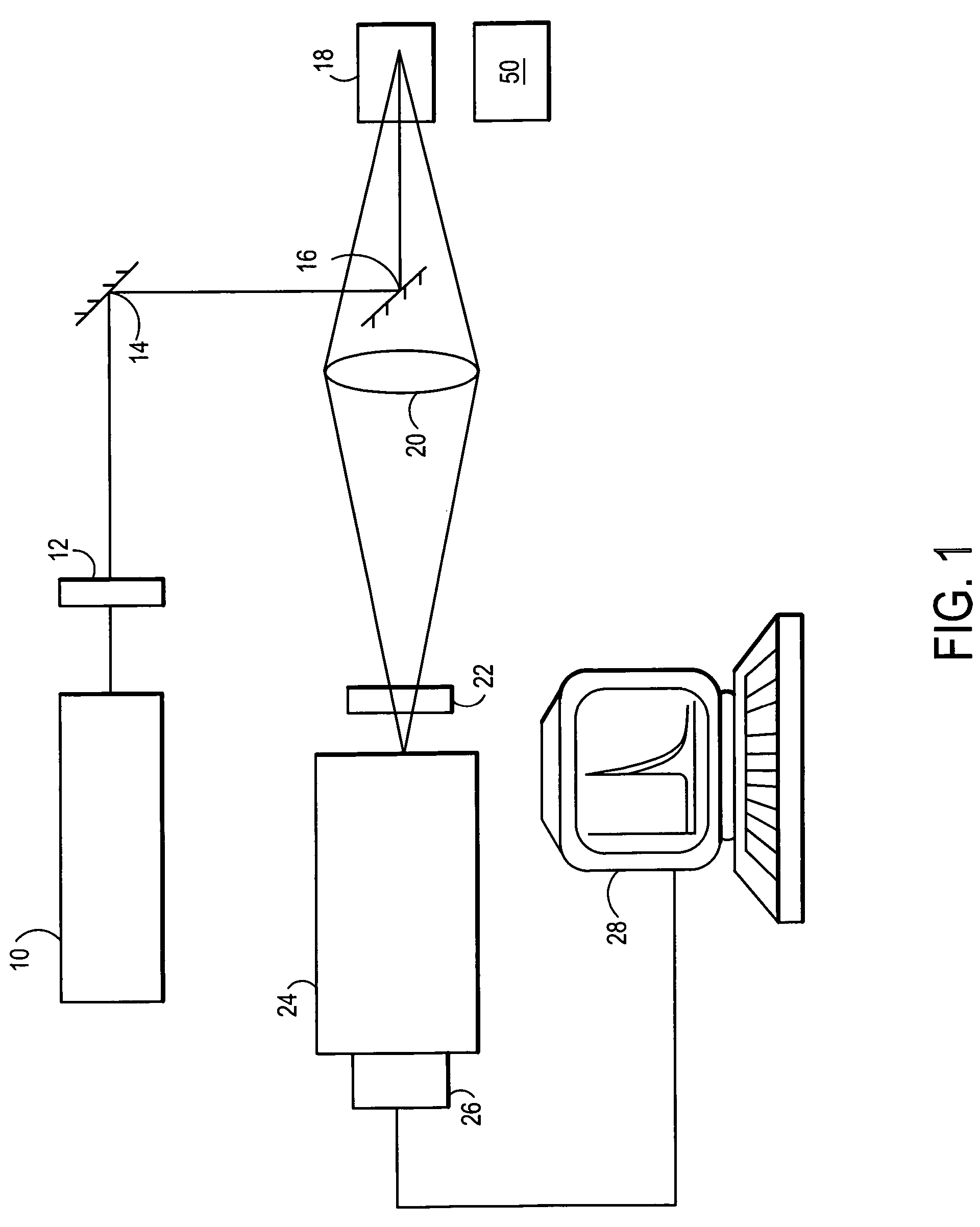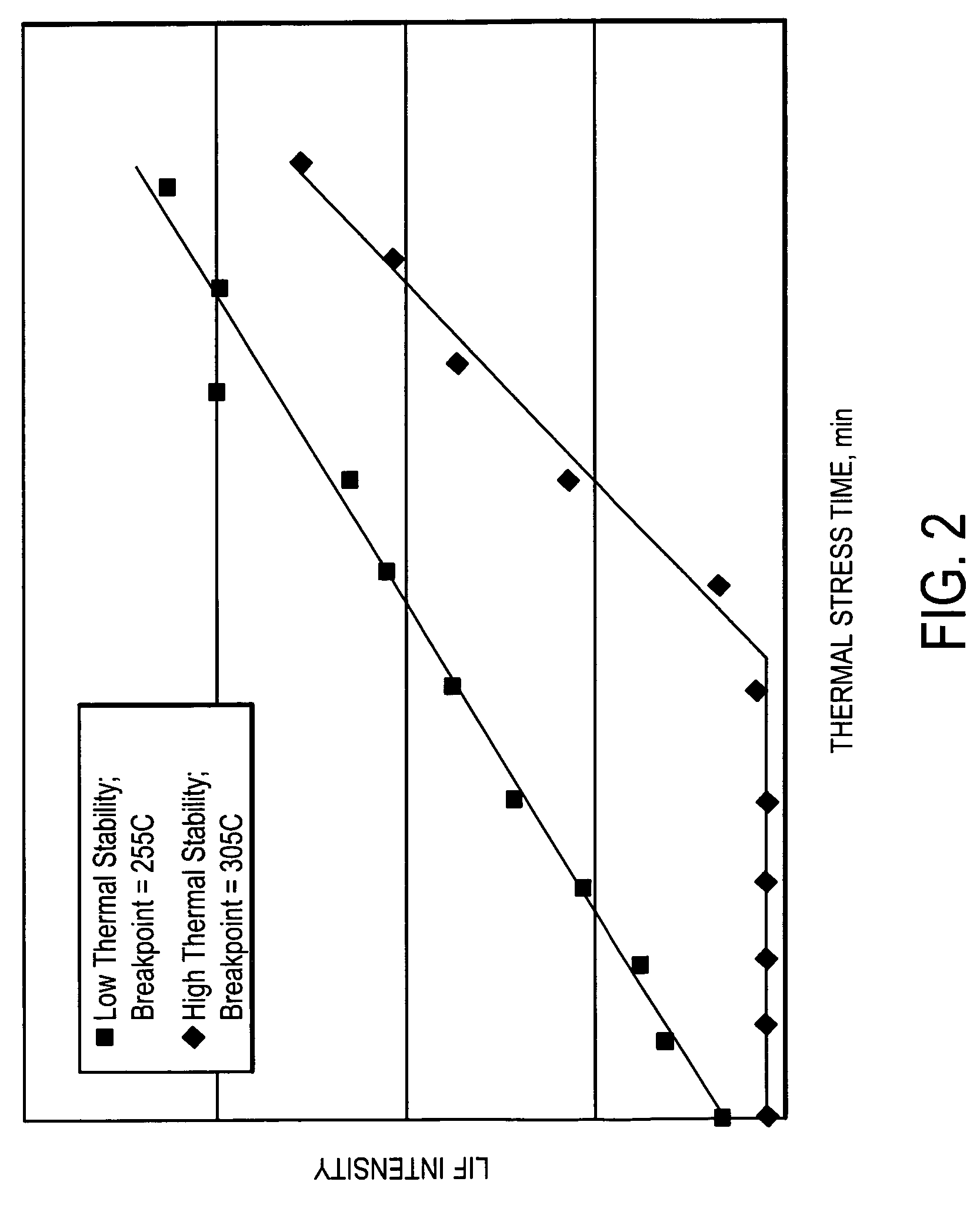Method for determination of fuel thermal stability
a fuel thermal stability and method technology, applied in the direction of fluorescence/phosphorescence, luminescent dosimeters, optical radiation measurement, etc., can solve the problems of inapplicability of models, researchers have developed models that are not universally applicable, and the routine analysis takes too long. , to achieve the effect of eliminating needless testing
- Summary
- Abstract
- Description
- Claims
- Application Information
AI Technical Summary
Benefits of technology
Problems solved by technology
Method used
Image
Examples
Embodiment Construction
[0017]A basic system that may be employed in the practice of this invention is shown in U.S. Pat. No. 5,198,871, incorporated herein by reference. The system shown in U.S. Pat. No. 5,198,871 lacks, however, a heater within the system that is used to heat samples to a given temperature in the practice of this invention. The present inventors have recognized the advantages of heating the fuel samples prior to or concurrent with directing light of an appropriate wavelength and intensity at the fuel.
[0018]A system that can be used in the practice of this invention is depicted in FIG. 1. In FIG. 1, light from an excitation source 10 is passed through a filter 12 and reflected by mirrors 14 and 16 to illuminate a fuel sample 18 to be tested for fluorescence. In one embodiment, the energy source 10 is a laser having a suitable wavelength to cause fluorescence. The energy source can be blue light in the wavelength range of 440-500 nanometers (nm), such as from the 488 nm line of an Argon ga...
PUM
| Property | Measurement | Unit |
|---|---|---|
| temperatures | aaaaa | aaaaa |
| temperature | aaaaa | aaaaa |
| wavelength | aaaaa | aaaaa |
Abstract
Description
Claims
Application Information
 Login to View More
Login to View More - R&D
- Intellectual Property
- Life Sciences
- Materials
- Tech Scout
- Unparalleled Data Quality
- Higher Quality Content
- 60% Fewer Hallucinations
Browse by: Latest US Patents, China's latest patents, Technical Efficacy Thesaurus, Application Domain, Technology Topic, Popular Technical Reports.
© 2025 PatSnap. All rights reserved.Legal|Privacy policy|Modern Slavery Act Transparency Statement|Sitemap|About US| Contact US: help@patsnap.com



